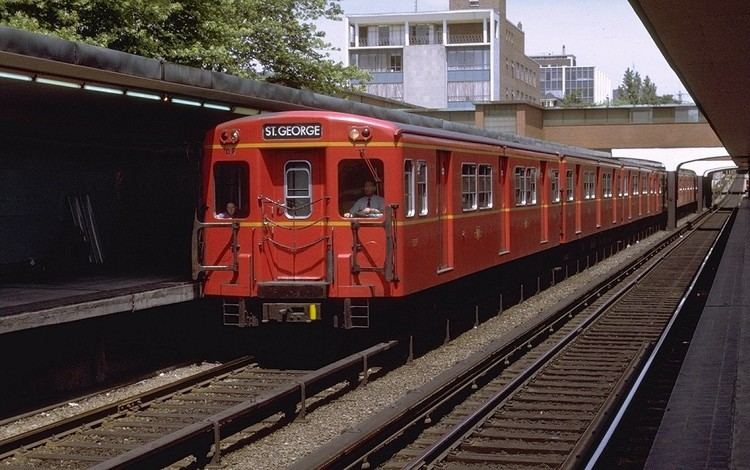In service 1954–1990 Constructed 1953–1959 | Built at Gloucester, England Scrapped October 6, 1990 | |
 | ||
Manufacturer Gloucester Railway Carriage and Wagon Company Number built 140 (Total)
G1: 100
G2: 6
G3: 6
G4: 28 | ||
The G-series was the first rolling stock of rapid transit cars used on the Toronto subway. With designs mainly influenced by the Q38 and R stocks of the London Underground, the G-series were built 1953-59 by the Gloucester Railway Carriage and Wagon Company for the Toronto Transit Commission (TTC). Since the TTC's original concept for the subway system foresaw the use of rapid transit cars derived from the President's Conference Car (PCC), like the 6000-series cars used on the Chicago 'L', the G-series also bear influences of these as well, notably the use of bulls-eye incandescent lighting similar to that of a PCC, and the small operator's cabin located in the front left corner of each car. The Chicago influence was felt through the work of DeLeuw, Cather & Co. of Chicago, whom the TTC contracted as a consultant for the rapid transit project.
Contents
The G-series cars were frequently described as "robust and reliable", despite being constructed overweight and energy-inefficient. On October 6, 1990 the last G-series trains operated on the Bloor-Danforth line and were replaced by the H-series trains. The only surviving cars, still mated in original condition, are fleet number 5098 and 5099, which are kept at the Halton County Radial Railway in Milton, Ontario.
Prototypes
Two mockup cars were delivered with slight variation from the final design:
Design
A total of 140 cars were built. Most were steel-bodied and had painted exteriors; however, six (G-2 series) experimental aluminum-bodied cars demonstrated the benefits of using aluminum for rapid transit car construction. The G-3 class cars were built as 'non-driving-motors' in that they had motorized trucks but were not equipped with an operator's cab or driving controls and thus could only be used in the middle of the train.
The G cars were originally designed in 2-car "married pair" formations, and were run in trains consisting of 2, 3 or 4 sets (4, 6 or 8 cars). When the G-3 class non-driving cars were introduced in 1956, 14 pairs of the G-3 class cars were inserted between G-1 class cars to form semi-permanently coupled 4-car trainsets, which could be coupled to the 2-car sets or operated on their own. They were the only subway trains with painted livery.
Retirement
Upon retirement from revenue service, several G-Series cars were rebuilt or refitted for duties as subway work cars.
Scale models
Two 1/16 scale models of cars 5042 and 5043 were commissioned by Sir Leslie Boyce of GRC&W and constructed by Bassett & Lowke, and have been located at Hillcrest and Greenwood at various times.
The model cars are stored and on display at the Hillcrest Training Centre.
